Philodendron is a genus of flowering plants native to Central and South America; they have approximately 450 species of climbing herbs of the family Araceae. These are very popular potted plants for offices and houses because of their ability to adapt to very low levels of light.
Do philodendrons bloom flowers?
Philodendrons are flowering plants that bloom during summer. Philodendron plants do bloom flowers, however, they are unique and different. This is because the flowering arrangements on philodendrons are not like other plants; the stems of philodendrons are covered in tiny flowers from top to bottom.
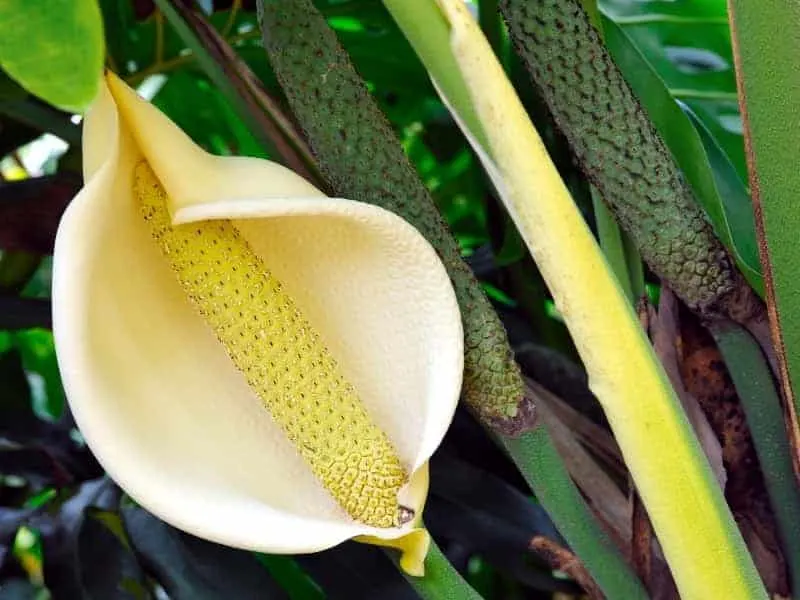
These plants cannot self-pollinate and require external assistance for reproduction. This is because philodendrons do not have both male and female parts at the same time; their reproductive parts evolve from female to male during the blooming period.
When philodendrons are mature enough and ready to reproduce, they develop the female organ which lets out a fragrance as a signal. When it has undergone pollination, this then evolves into the male part and is ready to produce pollen.
How often does a philodendron bloom?
Philodendrons will flower every year around May to July once they have reached maturity. Each plant has about 2 to 3 blooms that open throughout the blooming period. Philodendrons bloom for about 2 days when they are flowering.
This means that during May through July, philodendron plants go through their blooming period. During this time, the flower of the philodendron is only open for two days.
These flowers open about 2 or 3 times and these will take place randomly any day during the May to July blooming period. The span between each bloom also depends on each plant as their surrounding and environment play a factor in this as well.
How to get a philodendron to flower?
With love and a little bit of patience, you can help these plants bloom.
Humidity:
Since these plants are native to the tropical climate, they thrive in warm and humid environments. You need to make sure the humidity is at least 40%.
Temperature:
Generally, the temperature they flourish in is around 65ºF-80ºF during the daytime and 60ºF at night.
Watering:
The water needs to always be at room temperature. They also need occasional spraying; during warmer months every two to three days and during colder months two to three times every three months should suffice.
Light:
Although these plants can adapt to and survive in low lighting, they thrive in indirect bright light. They need to be kept in a pot outside where they get sufficient light; but not direct sunlight.
Time:
These plants need to reach maturity to bloom flowers. This can take up to 20 years.
Do these Philodendrons bloom flower?
Split leaf philodendron:
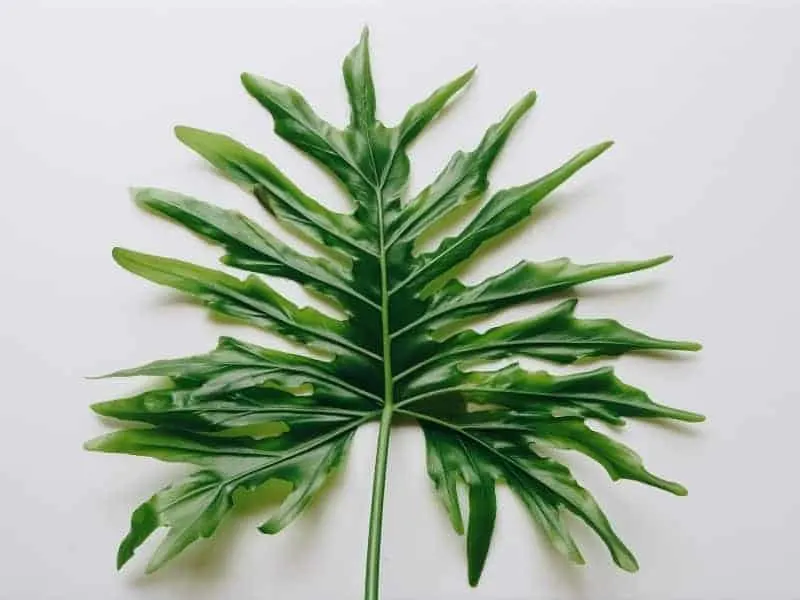
They do bloom flowers; the blooming period lasts 1-2 weeks. These philodendrons are open for about 2 days during the blooming period and they have 2-3 blooms that will open at different times during this time.
They require warm temperatures and have a strong blooming fragrance during nighttime.
Imperial red Philodendron:
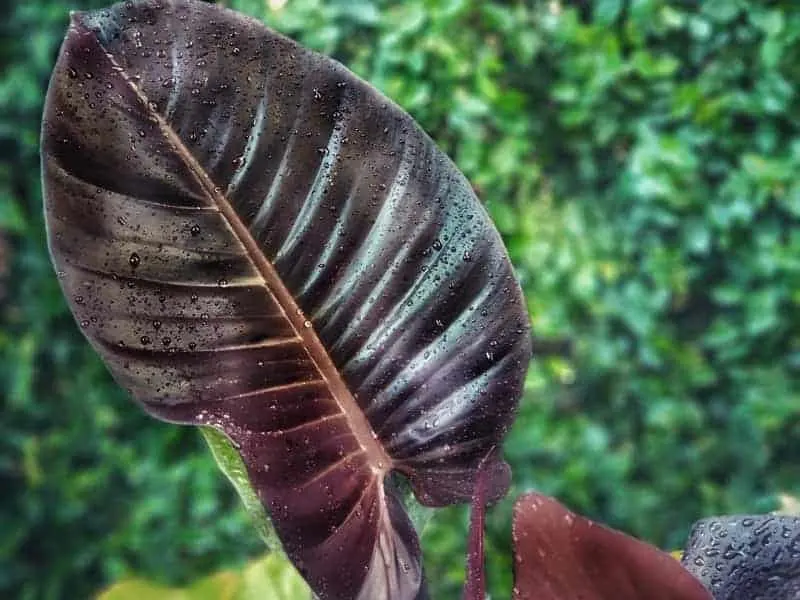
These philodendrons do not bloom flowers. Imperial red philodendrons are a hybrid plant that grows into a volume bush.
They have dark green leaves that form rosettes at the end; new leaves are red in color. The optimal environment for these plants is warm and humid.
Philodendron Birkin:
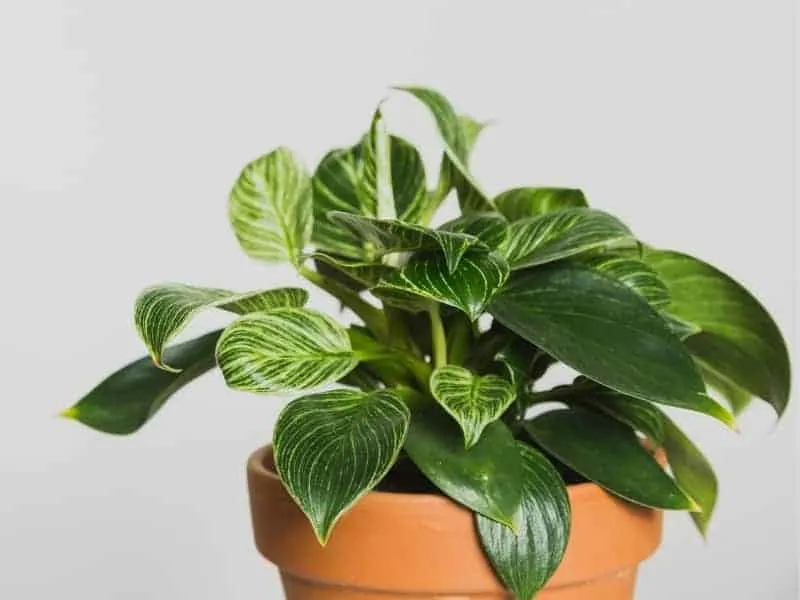
This type of philodendron is not flowering plants; they are foliage plants. The philodendron Birkin has dark green leaves with yellow to white stripes running across the leaves.
They thrive under bright indirect light and in temperatures ranging from 65ºF-75ºF during the daytime and 60ºF at night.
Philodendron Moonlight:
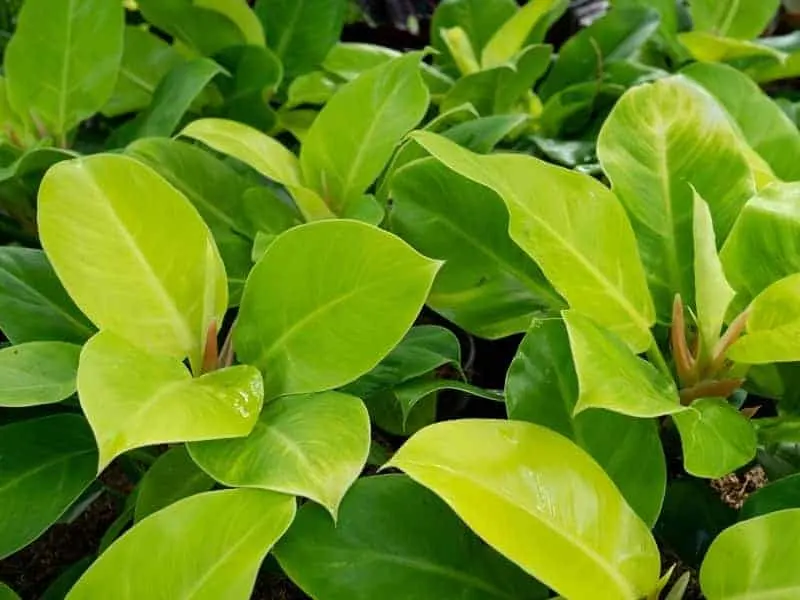
This is a hybrid low-growing shrub-like plant with bold yellowish green colored leaves. This philodendron does occasionally bloom flowers that have white spandex and pink to red spathe. The flowers last for about 4 weeks.
The ideal temperature for the Moonlight Philodendron would be around 65ºF-78ºF during the day and 60ºF at night. Just like other philodendrons, bright indirect sunlight is ideal.
Philodendron Pink princess:
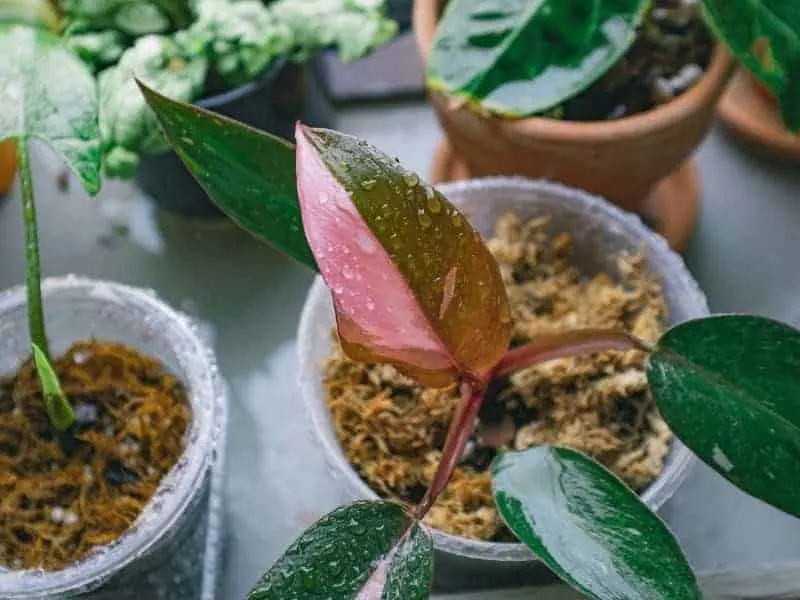
The philodendron Pink Princess or Philodendron erubescens is a foliage plant with dark green and pink leaves This philodendron rarely blooms indoors.
They flourish in a spot that is humid and has bright indirect light in a pot with moist and well-draining soil. The optimal temperature for this plant is 60ºF to 84ºF. The lack of chlorophyll gives this plant its pinkish color.
Philodendron Silversword:
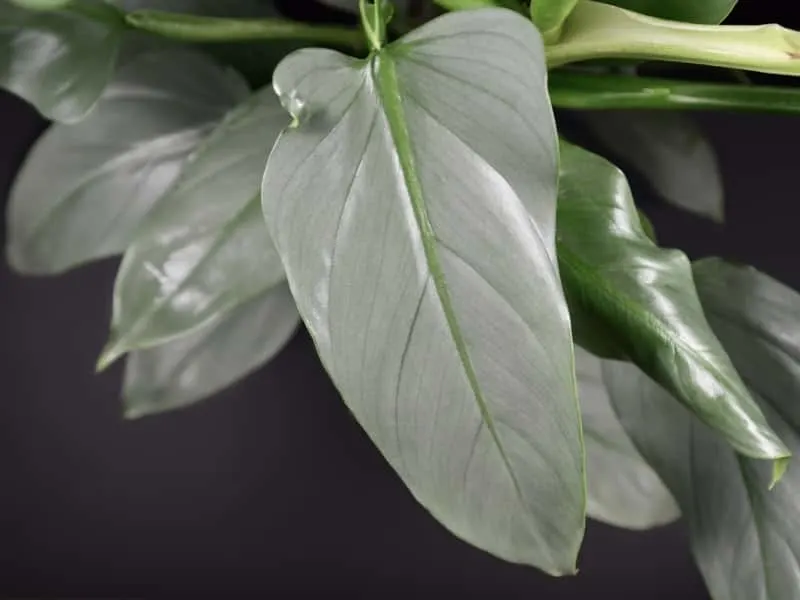
This is also known as Philodendron Hastatum. Philodendron Silver Sword is a type of climbing vine plant.
Unlike another philodendron, this plant has angular leaves with sharp edges with shiny mirror-like gloss under a light. This philodendron does not bloom flowers and thrives in medium to low light.
Philodendron Xanadu:
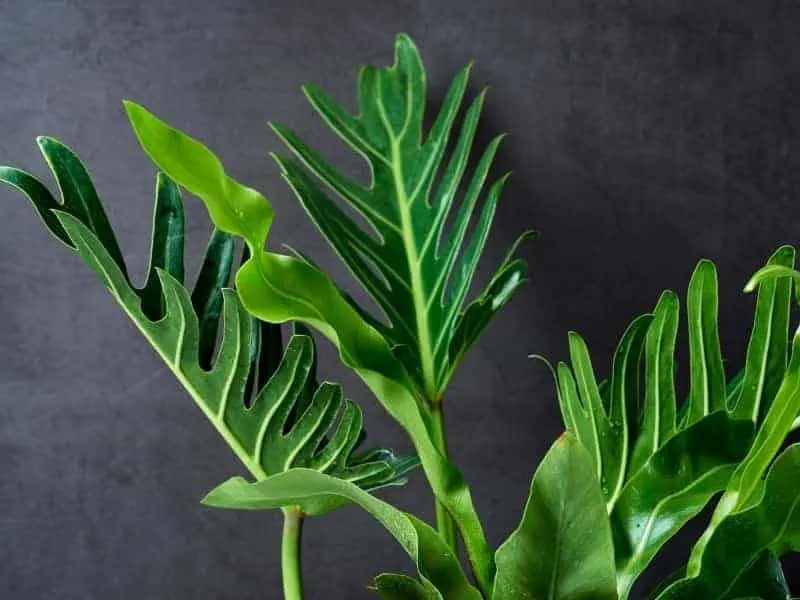
The philodendron Xanadu is a flowering plant with glossy green and deeply lobed leaves. They thrive in loosely mixed soil and under indirect light. This philodendron has dark red spathes and flowers outdoors.
Humidity is a big factor that plays a role in this plant thriving; humidity has to be at least 40% for healthy growth.
Philodendron Micans:

These are also known as Velvet-Leaf Philodendron that has shaped green leaves with dark pinkish to purple borders.
The Philodendron Micans generally grow green and white adroid flowers that grow about 15 inches. They occasionally bloom around summertime and the flowers do not have any fragrance.
Philodendron Selloum:
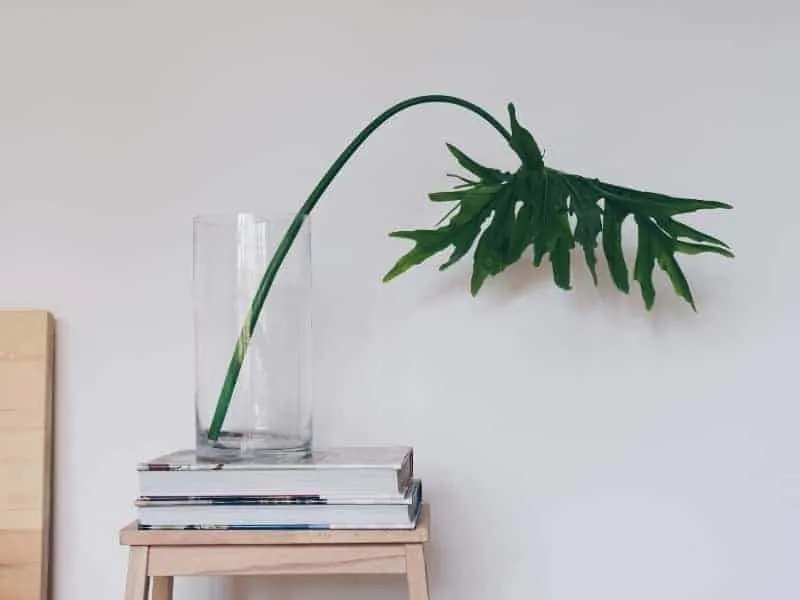
The Philodendron Selloum, more commonly known as Tree Philodendron are heavy foliage plants that have occasional blooms with white flowers.
This plant grows into large, showy leaves and can tolerate deep shade but prefers bright light.
They need to be mature enough to produce flowers, which takes about 15-20 years of time. The flowers are small, petalless, and grow on the spadix and, enclosed within a spathe.
Philodendron Cordatum:
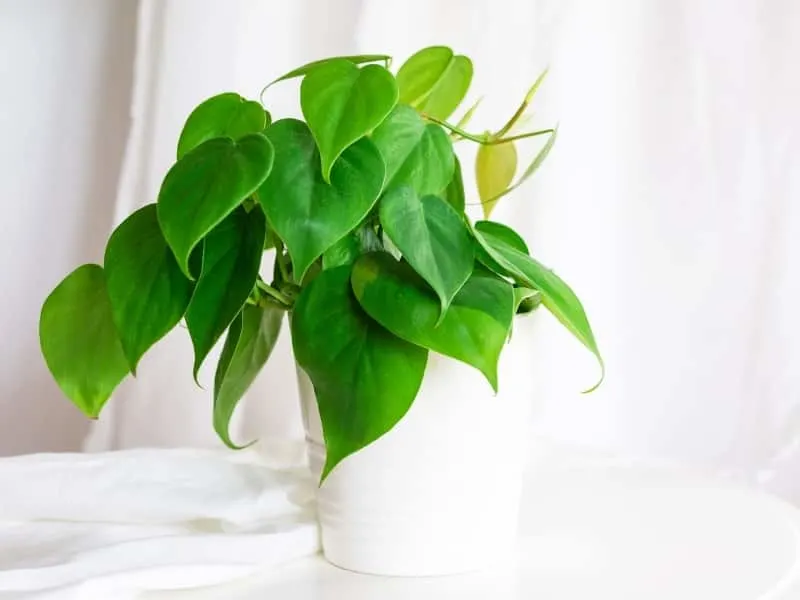
The philodendron Cordatum which is also known as the Sweetheart Vine is a common indoor houseplant. This plant has small heart-shaped green leaves which are about 2-3 inches big.
This climbing vine type of philodendron and thrives in bright indirect light. They do not bloom flowers indoors and produce tiny flowers on the spathe in outdoor settings.
They need the temperature to be around 65ºF-75ºF. The flowers are almost unnoticeable by the eye.
Philodendron Gloriosum:
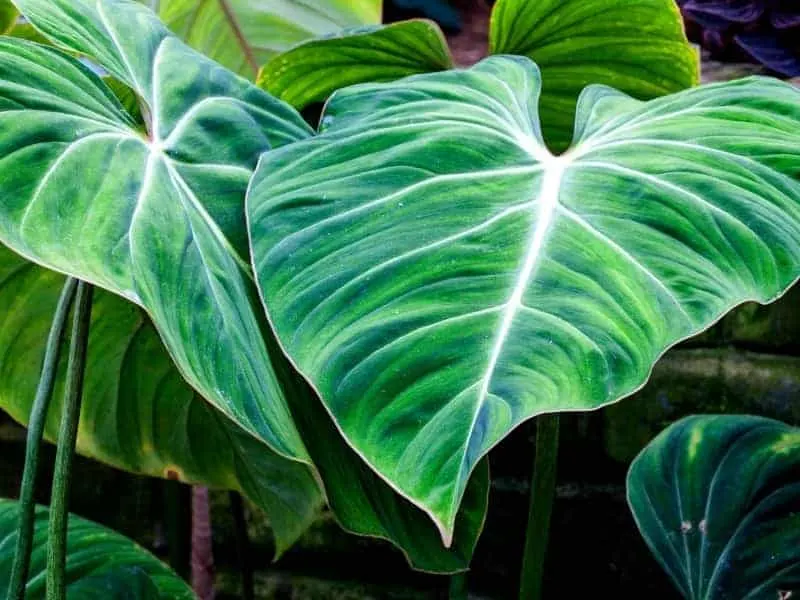
These are a type of crawling & flowering plants with large and velvety heart-shaped leaves. They rarely bloom in indoor settings.
The leaves are green with eye-catching pink to creamy white veins running across them. They are native to Peru, Brazil, Columbia, Ecuador, and Venezuela. They grow on the forest floor and thrive in warm, humid environments.
Philodendron Brasil:
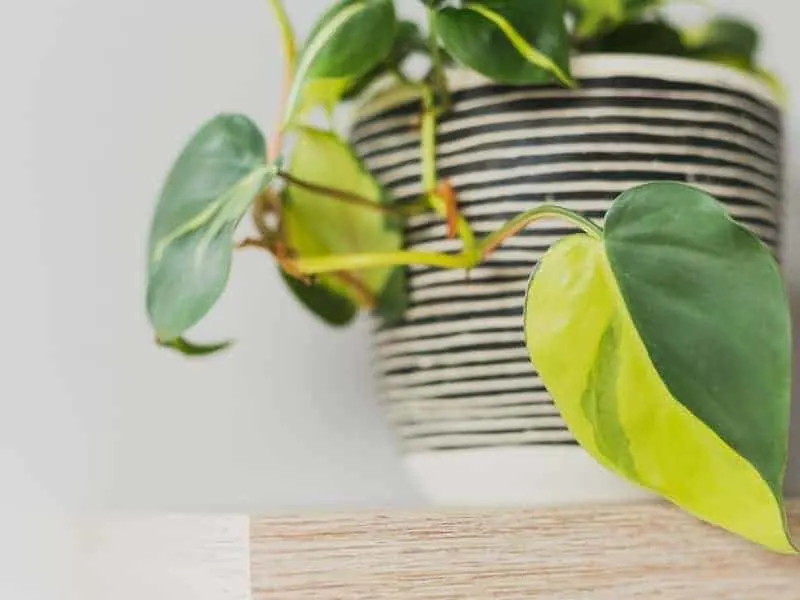
The resemblance of the color to the Brazilian flag is the result of this plant’s name.
The philodendron brasil has heart shaped yellow and green leaves and is a leafy indoor plant. They have inflorescence structures that rarely bloom or flower.
How do you get pollen from a Philodendron?
Philodendron plants go through stages during inflorescence. When they are in the primary stage of the inflorescence, they develop the spadix; which means that the flower is female at this stage.
These flowers then become male at the end of the flowering cycle ready to produce pollen.
To pollinate a philodendron, pollen has to be collected from another plant because as mentioned before the flower becomes male from female at the end of the cycle.
To collect pollen, simply tap the spadix and allow the pollen to collect on a glass container or tissue paper, and lastly keep in the freezer.
How to pollinate Philodendron?
Philodendrons do not have separated male and female reproductive parts, this means that they cannot self-pollinate.
Reproduction for these plants depends on the location of their origin; plants from Brazil are pollinated by scarab beetles, but these beetles cannot be found outside of the tropical countries so plants from other regions require human assistance.
There are a few ways humans can stimulate pollination:
Pollinate by hand:
This process is done by rubbing the pollen on the female part of the spadix during the night.
Propagate by stem-cutting:
Pollination by this process takes longer than pollination by hand. Here you basically are extracting DNA and essentially cloning the plant. You have to cut a piece from the top of the trunk and stick it in the soil and wait.
How to cross-pollinate Philodendron?
Philodendron pollen does not stay viable for long, it has to be kept frozen. Since inflorescence is very short and unpredictable, cross-pollination can get tricky. The only way to do this is by hand.
You have to collect pollen from one plant and apply it to the other plant when the female of that plant is ready; this is usually during late night when they give off a strong fragrance. To make sure the pollen does not dry out, cover the spathe with plastic wrap.
Philodendrons are very impressive plants that are common house and office plants. There is a wide variety of these plants that will be attractive to everyone. From heart-shaped leaves to multi-colored and glossy leaves, these plants have stolen the hearts of millions.
Frequently Asked Questions:
Rare Philodendron Species (Why is Philodendron so Rare?)
Why are Philodendron Leaves Curling?
Can Philodendron Grow in Low Light?
Can Philodendron Grow in Shade or Sun?
